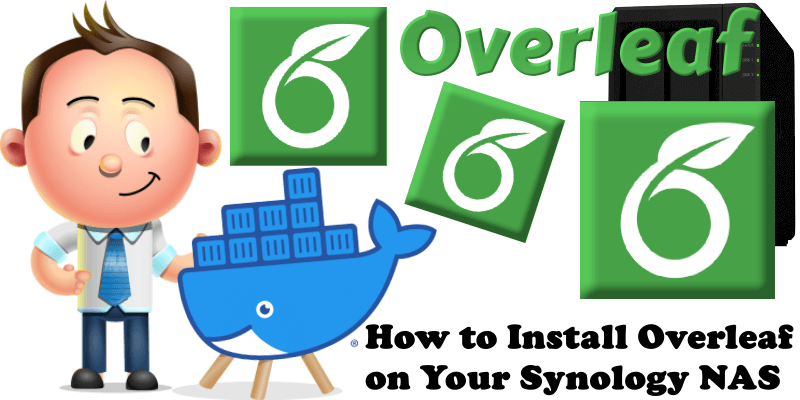
Overleaf is a collaborative cloud-based LaTeX editor used for writing, editing and publishing scientific documents. It partners with a wide range of scientific publishers to provide official journal LaTeX templates, and direct submission links. In this step by step guide I will show you how to install Overleaf Community Edition on your Synology NAS using Docker & Portainer. ⚠️Note: This container needs a NAS with AVX support.
STEP 1
Please Support My work by Making a Donation.
STEP 2
Install Portainer using my step by step guide. If you already have Portainer installed on your Synology NAS, skip this STEP. Attention: Make sure you have installed the latest Portainer version.
STEP 3
Make sure you have a synology.me Wildcard Certificate. Follow my guide to get a Wildcard Certificate. If you already have a synology.me Wildcard certificate, skip this STEP.
STEP 4
Go to Control Panel / Login Portal / Advanced Tab / click Reverse Proxy. Follow the instructions in the image below.
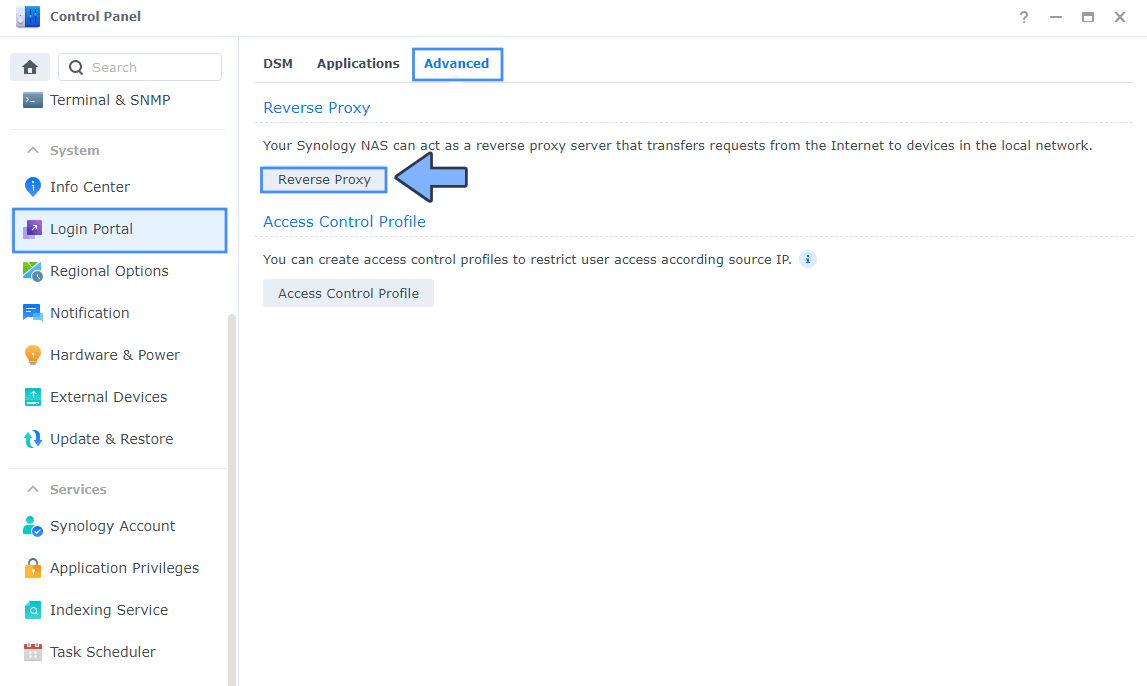
STEP 5
Now click the “Create” button. Follow the instructions in the image below.
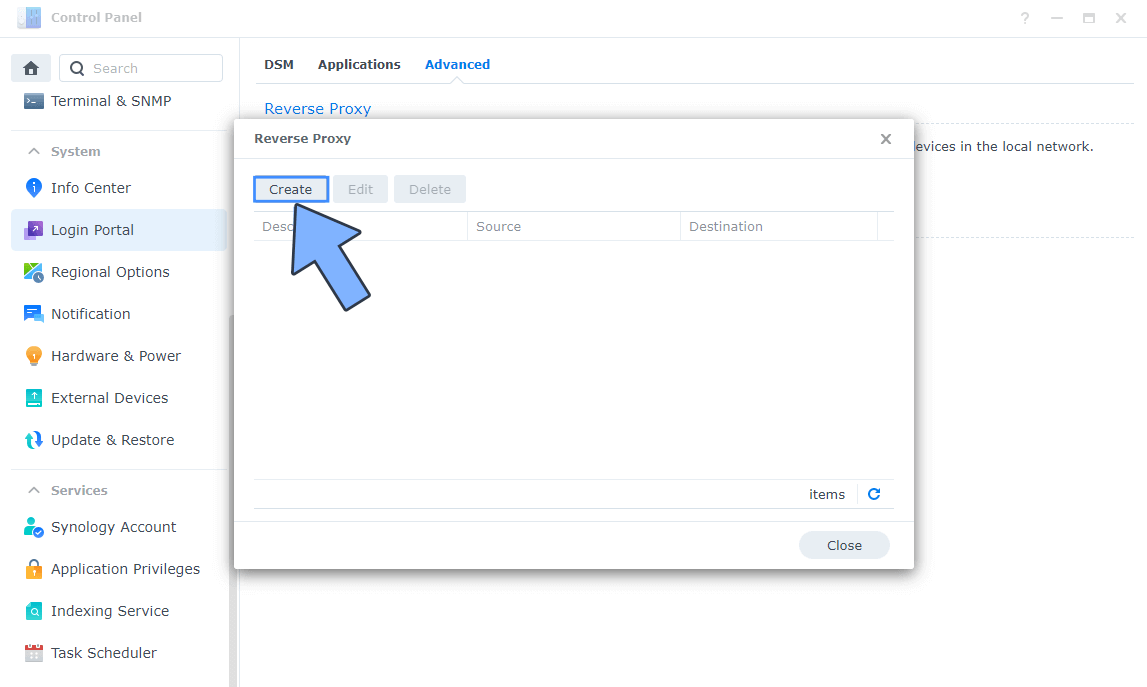
STEP 6
After you click the Create button, the window below will open. Follow the instructions in the image below.
On the General area, set the Reverse Proxy Name description: type in Overleaf. After that, add the following instructions:
Source:
Protocol: HTTPS
Hostname: overleaf.yourname.synology.me
Port: 443
Check Enable HSTS
Destination:
Protocol: HTTP
Hostname: localhost
Port: 7643
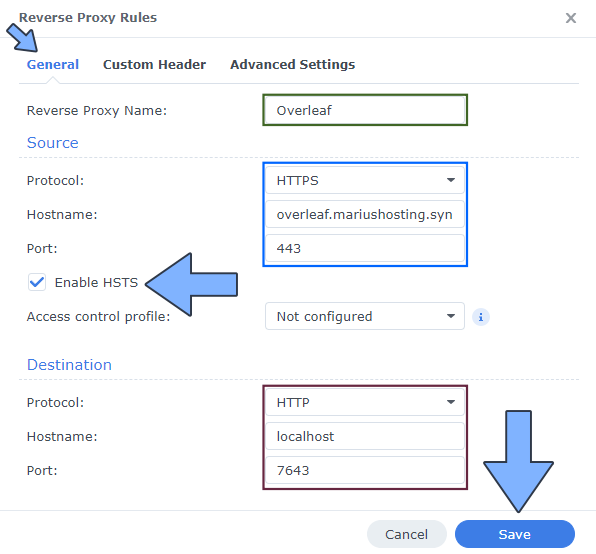
STEP 7
On the Reverse Proxy Rules click the Custom Header tab. Click Create and then, from the drop-down menu, click WebSocket. After you click on WebSocket, two Header Names and two Values will be automatically added. Click Save. Follow the instructions in the image below.
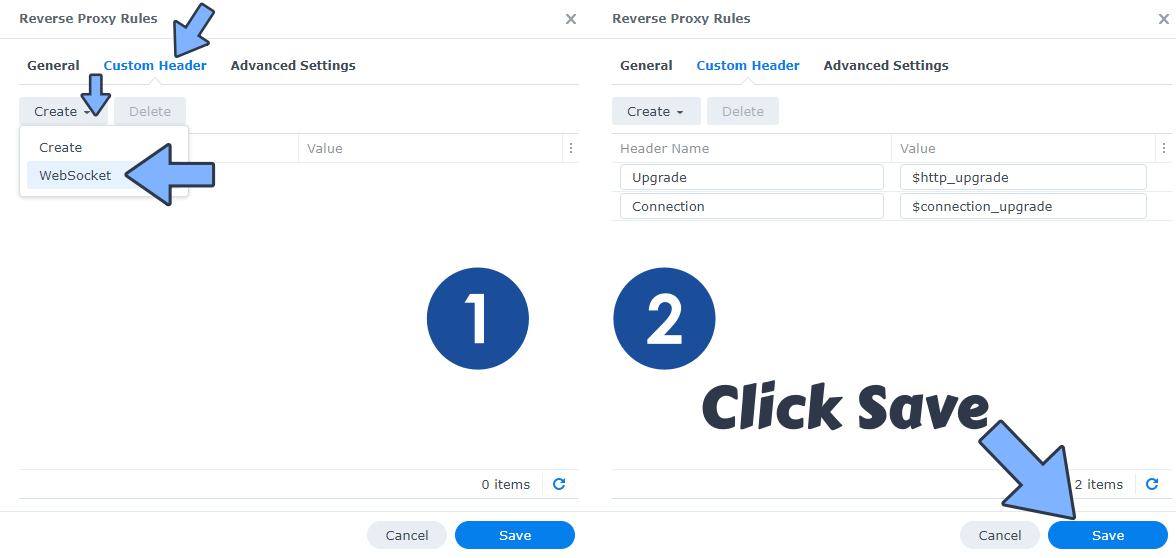
STEP 8
Go to Control Panel / Network / Connectivity tab/ Check Enable HTTP/2 then click Apply. Follow the instructions in the image below.
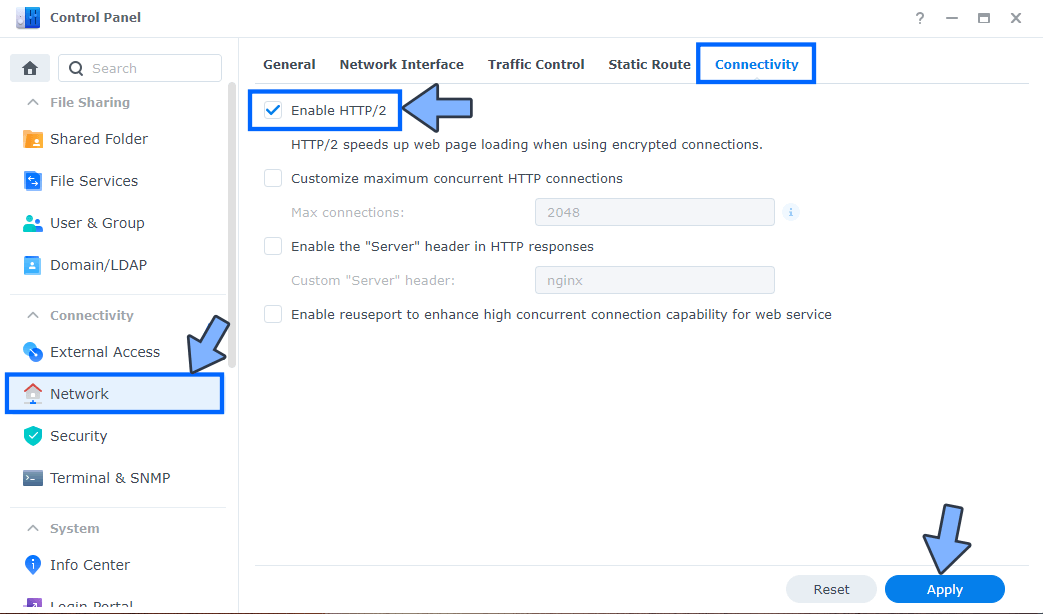
STEP 9
Go to Control Panel / Security / Advanced tab/ Check Enable HTTP Compression then click Apply. Follow the instructions in the image below.
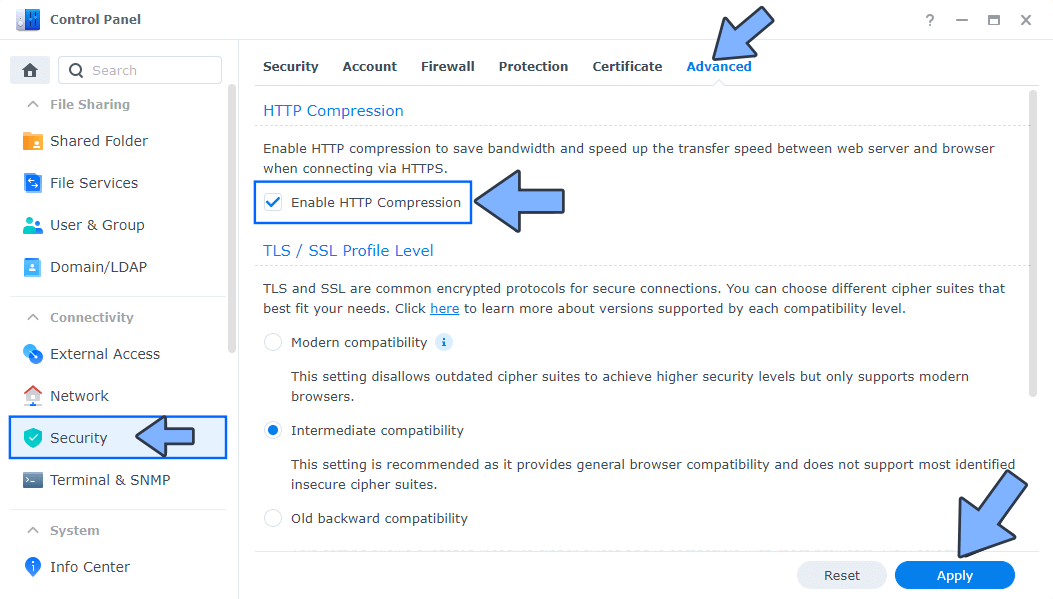
STEP 10
Go to File Station and open the docker folder. Inside the docker folder, create one new folder and name it overleaf. Follow the instructions in the image below.
Note: Be careful to enter only lowercase, not uppercase letters.
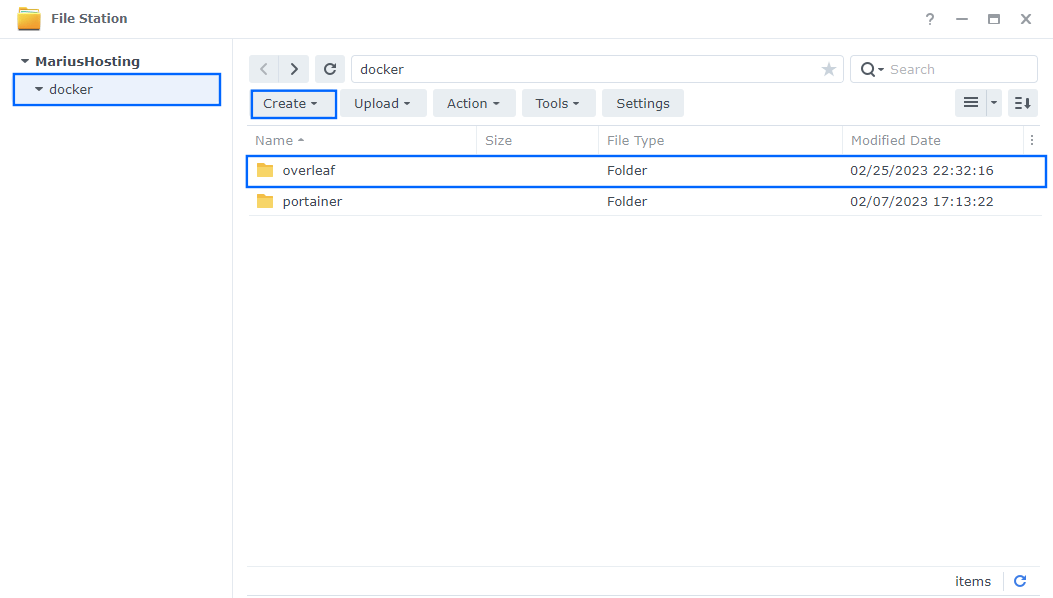
STEP 11
Now create three new folders inside the overleaf folder that you created at STEP 10 and name them configdb, db, redis. Follow the instructions in the image below.
Note: Be careful to enter only lowercase, not uppercase letters.
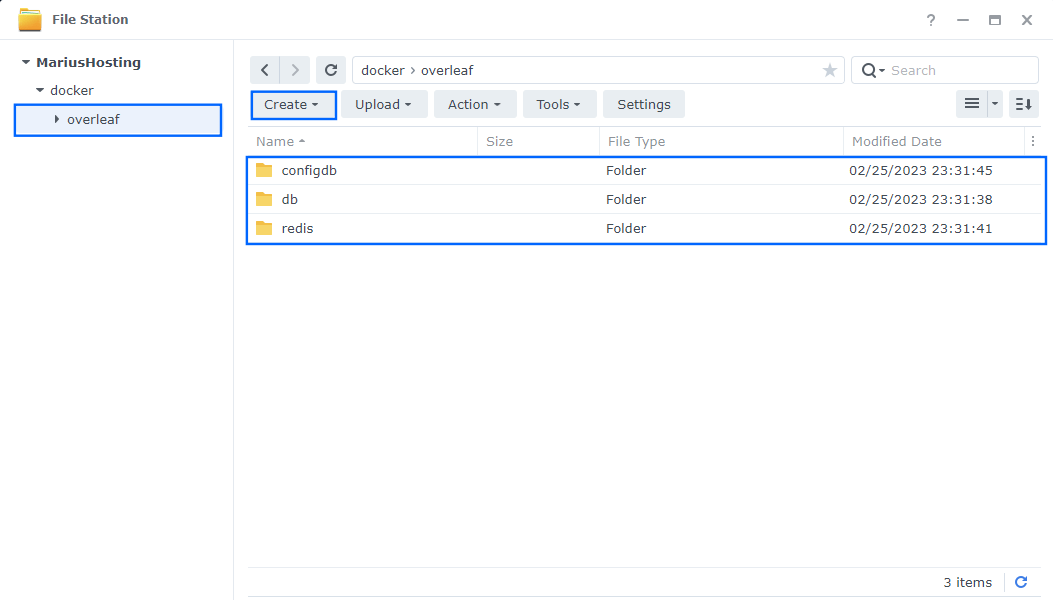
STEP 12
Follow my step by step guide on how to activate SMTP for your Gmail account. This step is mandatory. Note: If you don’t want to use the easiest way for SMTP with Google and you already have SMTP details from your own Mail Server, you can just skip this STEP and use your personalized email SMTP details instead.
STEP 13
Log into Portainer using your username and password. On the left sidebar in Portainer, click on Home then Live connect. Follow the instructions in the image below.
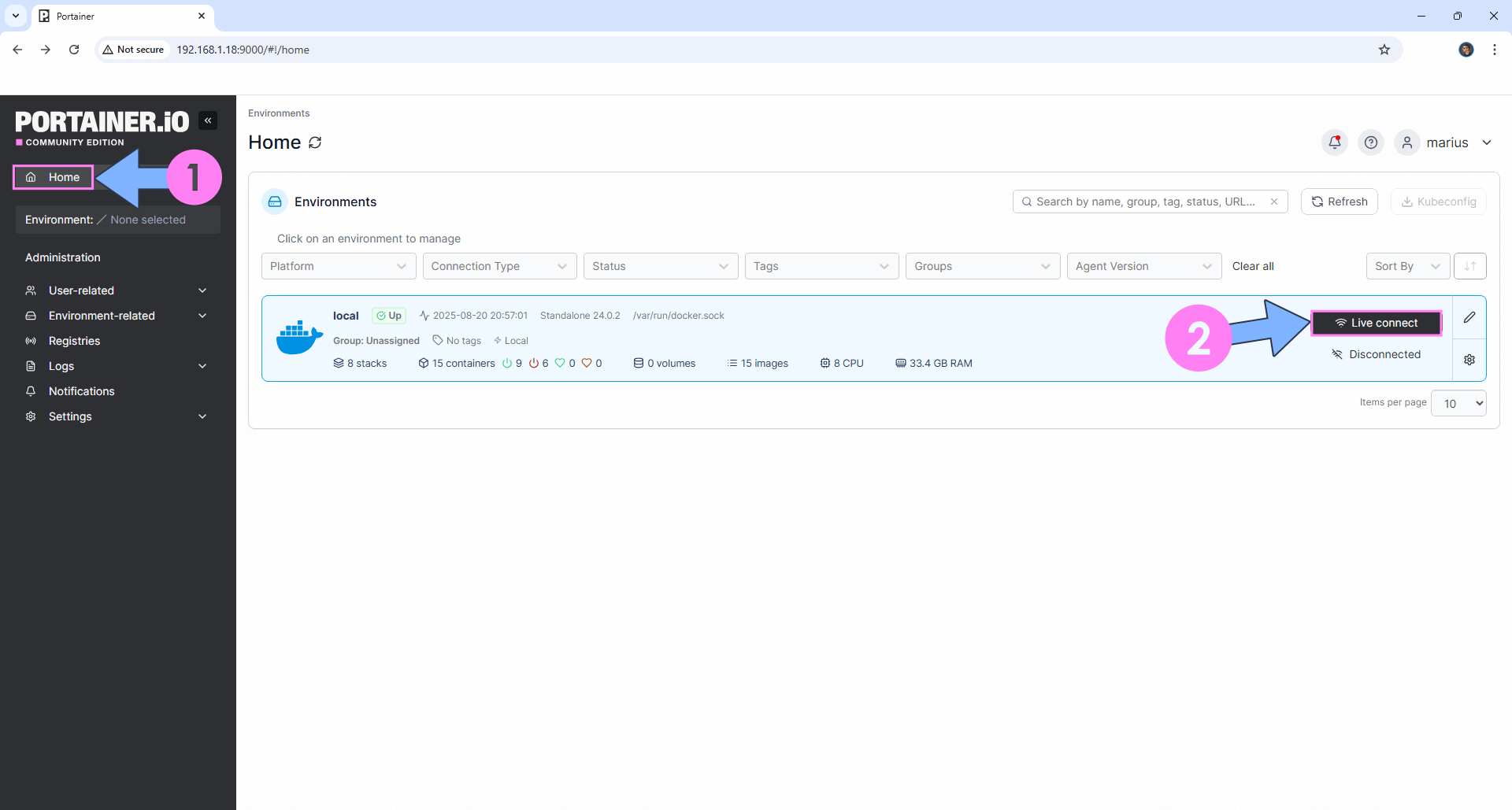
On the left sidebar in Portainer, click on Stacks then + Add stack. Follow the instructions in the image below.

STEP 14
In the Name field type in overleaf. Follow the instructions in the image below.
services:
overleaf:
restart: on-failure:5
image: sharelatex/sharelatex:latest
healthcheck:
test: curl -f http://localhost:80/ || exit 1
container_name: Overleaf
depends_on:
mongo:
condition: service_healthy
redis:
condition: service_healthy
ports:
- 7643:80
stop_grace_period: 60s
volumes:
- /volume1/docker/overleaf:/var/lib/overleaf:rw
- /volume1/docker/overleaf:/var/www/overleaf:rw
- /volume1/docker/overleaf:/var/www/sharelatex:rw
environment:
OVERLEAF_APP_NAME: Overleaf Community Edition
OVERLEAF_MONGO_URL: mongodb://mongo/sharelatex
OVERLEAF_REDIS_HOST: redis
REDIS_HOST: redis
ENABLED_LINKED_FILE_TYPES: project_file,project_output_file
ENABLE_CONVERSIONS: true
EMAIL_CONFIRMATION_DISABLED: false
OVERLEAF_ADMIN_EMAIL: Your-own-gmail-address
TEXMFVAR: /var/lib/sharelatex/tmp/texmf-var
OVERLEAF_SITE_URL: https://overleaf.yourname.synology.me
OVERLEAF_NAV_TITLE: mariushosting
OVERLEAF_EMAIL_SMTP_HOST: smtp.gmail.com
OVERLEAF_EMAIL_SMTP_PORT: 587
OVERLEAF_EMAIL_SMTP_USER: Your-own-gmail-address
OVERLEAF_EMAIL_SMTP_PASS: Your-own-app-password
OVERLEAF_EMAIL_SMTP_TLS_REJECT_UNAUTH: true
OVERLEAF_EMAIL_SMTP_IGNORE_TLS: false
OVERLEAF_EMAIL_FROM_ADDRESS: Your-own-gmail-address
OVERLEAF_EMAIL_SMTP_LOGGER: true
mongo:
image: mongo:6.0
container_name: Overleaf-DB
command: --replSet rs0 --bind_ip_all
volumes:
- /volume1/docker/overleaf/db:/data/db:rw
ports:
- "27017:27017"
healthcheck:
test: echo 'db.runCommand("ping").ok' | mongosh localhost:27017/test --quiet
interval: 10s
timeout: 10s
retries: 5
start_period: 40s
restart: always
mongo-init:
image: mongo:6.0
container_name: mongo-init
restart: "no"
depends_on:
mongo:
condition: service_healthy
command: >
mongosh --host mongo:27017 --eval 'rs.initiate({ _id: "rs0", members: [{ _id: 0, host: "mongo:27017" }] })'
redis:
image: redis
container_name: Overleaf-REDIS
security_opt:
- no-new-privileges:true
healthcheck:
test: ["CMD-SHELL", "redis-cli ping || exit 1"]
expose:
- 6379
volumes:
- /volume1/docker/overleaf/redis:/data:rw
environment:
TZ: Europe/Bucharest
restart: on-failure:5
Note: Before you paste the code above in the Web editor area below, change the value for OVERLEAF_ADMIN_EMAIL and type in your own Gmail address.
Note: Before you paste the code above in the Web editor area below, change the value for OVERLEAF_SITE_URL and type in your own synology.me DDNS with https:// at the beginning that you have previously created at STEP 6.
Note: Before you paste the code above in the Web editor area below, change the value for OVERLEAF_NAV_TITLE and type in your own nav title. mariushosting is an example for a nav title.
Note: Before you paste the code above in the Web editor area below, change the value for OVERLEAF_EMAIL_SMTP_USER and type in your own Gmail address. Refer to STEP 12.
Note: Before you paste the code above in the Web editor area below, change the value for OVERLEAF_EMAIL_SMTP_PASS and type in your own Gmail app password. Refer to STEP 12.
Note: Before you paste the code above in the Web editor area below, change the value for OVERLEAF_EMAIL_FROM_ADDRESS and type in your own Gmail address. Refer to STEP 12.
Note: Before you paste the code above in the Web editor area below, change the value for TZ. (Select your current Time Zone from this list.)
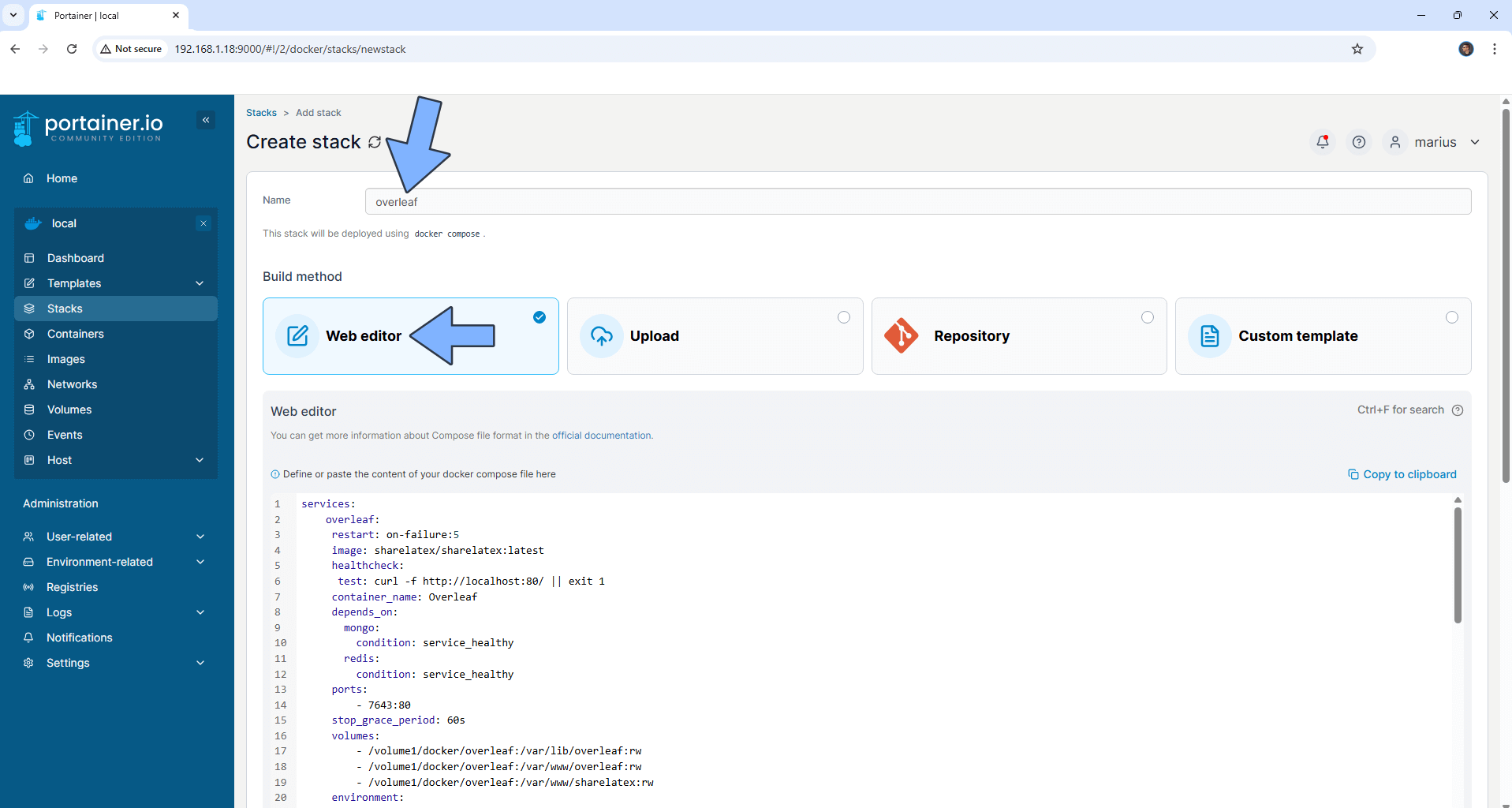
STEP 15
Scroll down on the page until you see a button named Deploy the stack. Click on it. Follow the instructions in the image below. The installation process can take up to a few minutes. It will depend on your Internet speed connection.
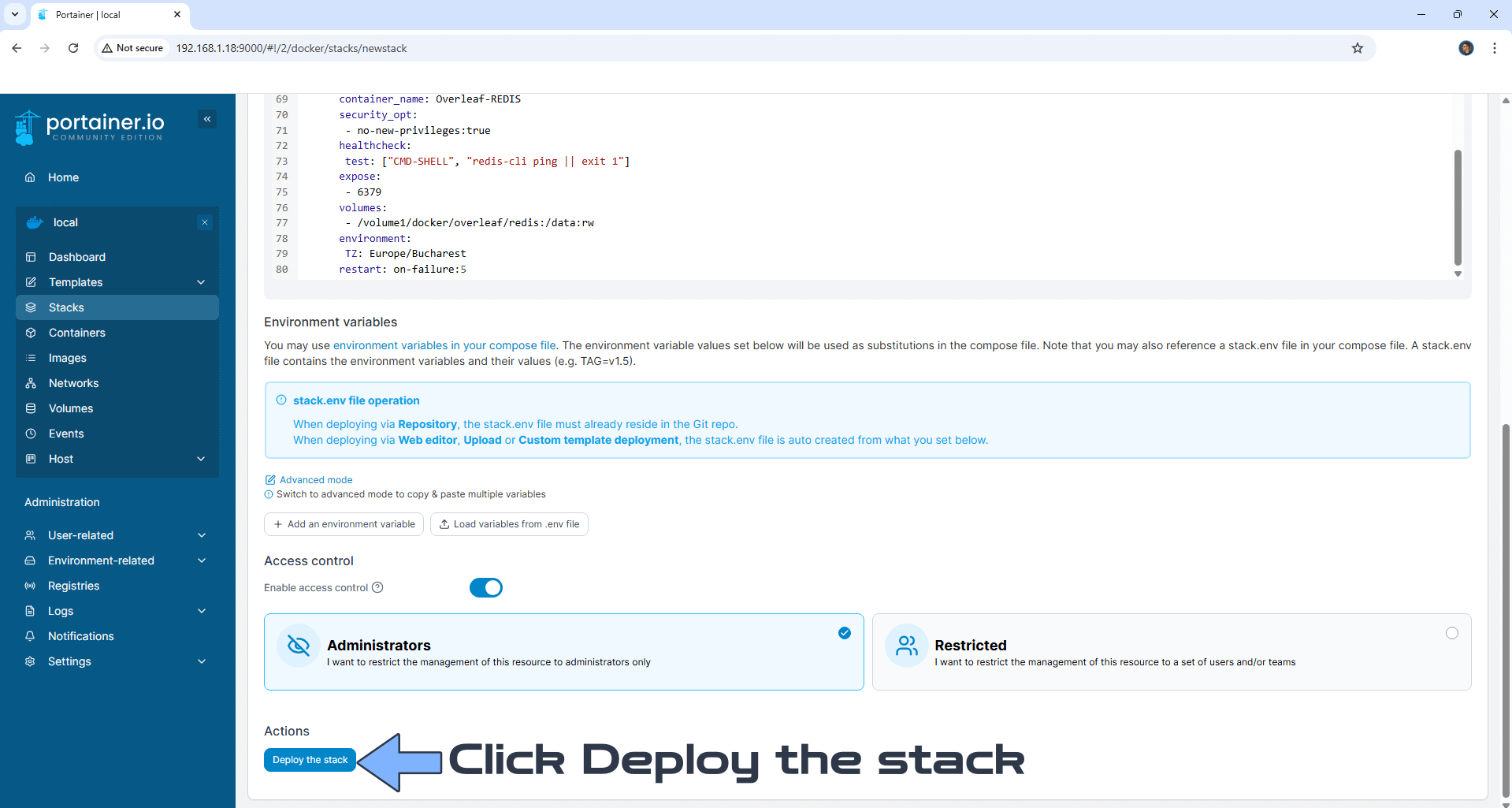
STEP 16
If everything goes right, you will see the following message at the top right of your screen: “Success Stack successfully deployed“.
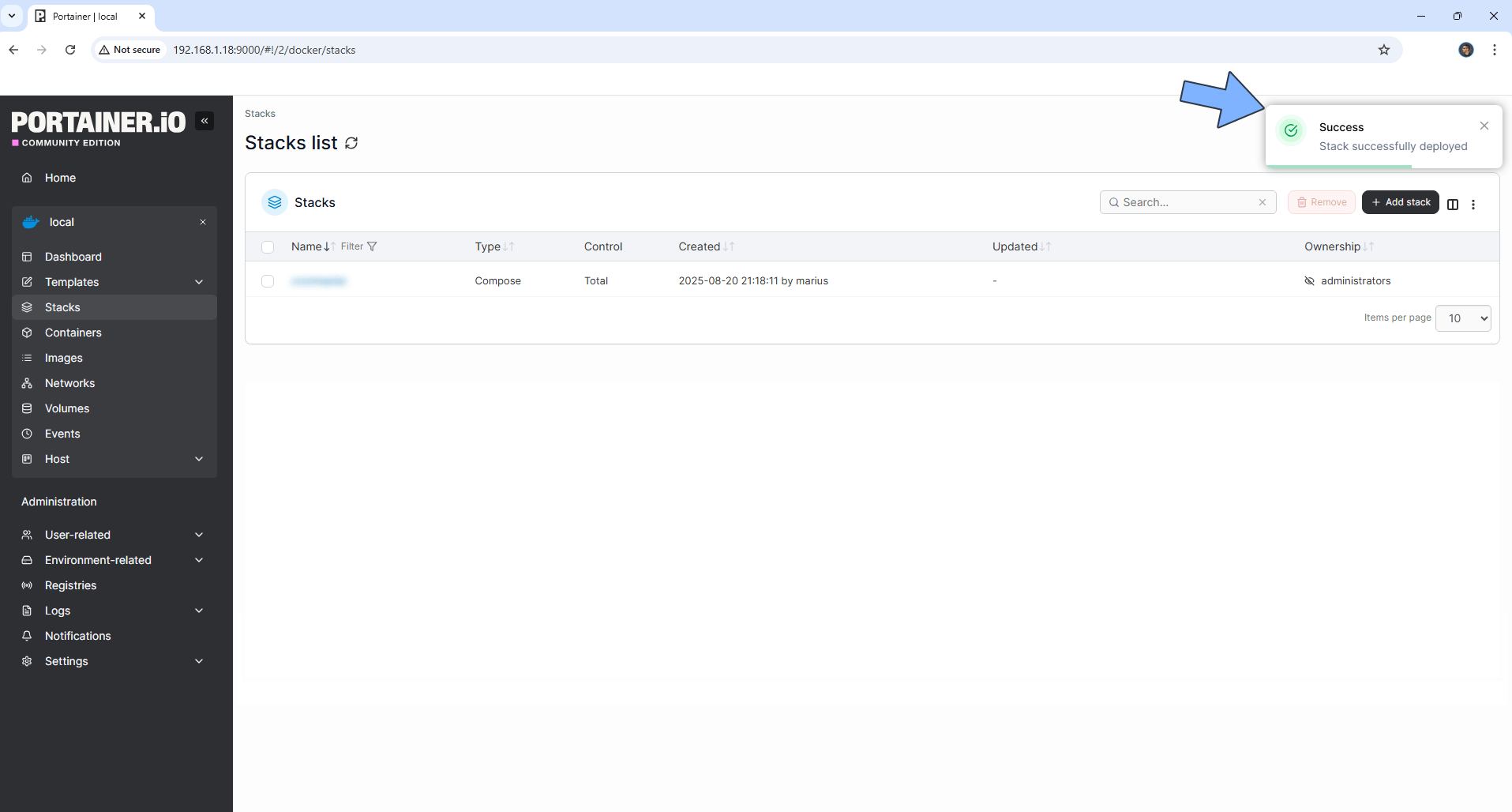
STEP 17
On the left sidebar in Portainer, click Containers. Identify your Overleaf instance, then click on the little terminal icon. Follow the instructions in the image below.
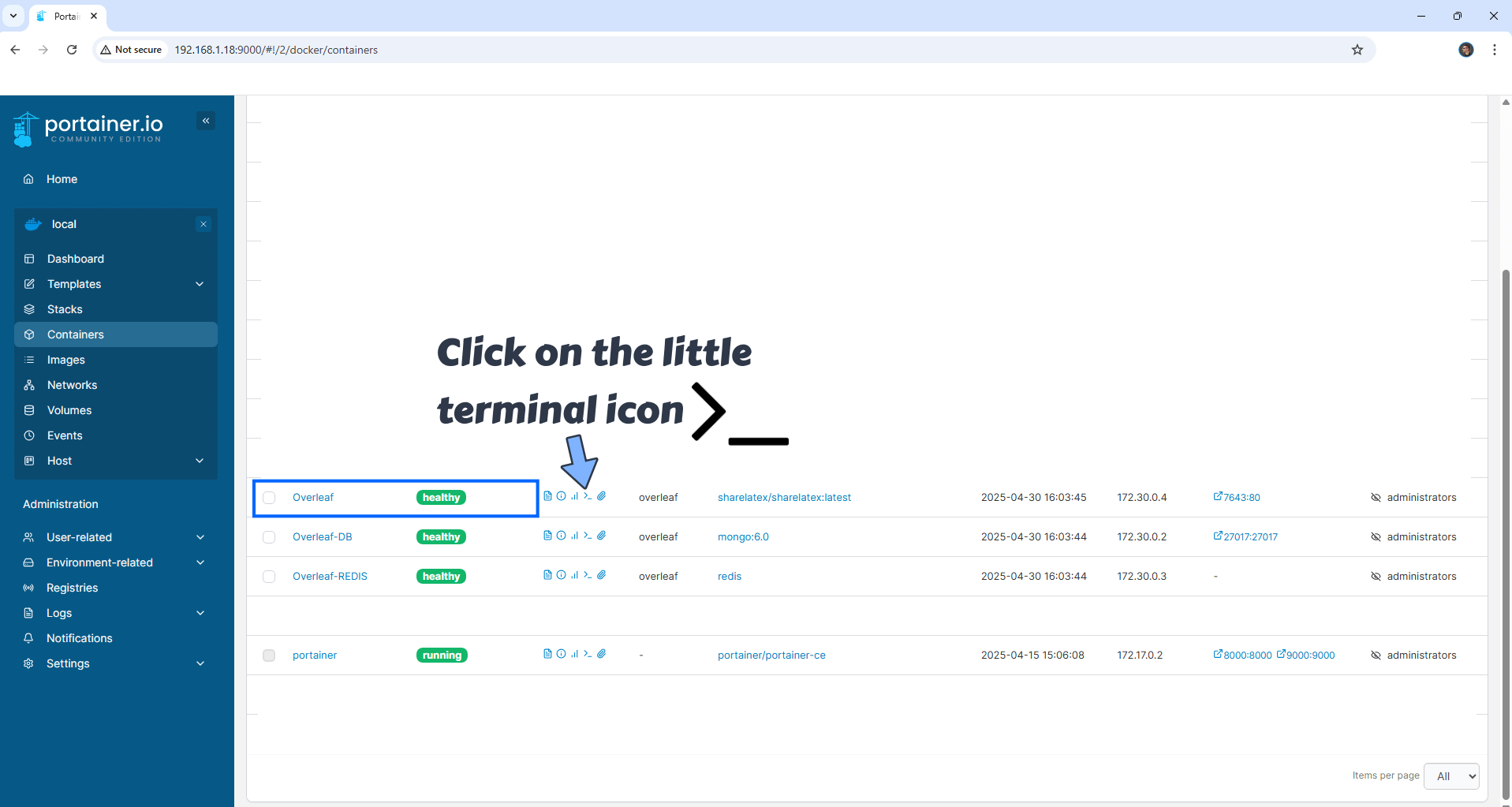
STEP 18
After you click on the little terminal icon at STEP 17, a new page will open. Click Connect. Follow the instructions in the image below.
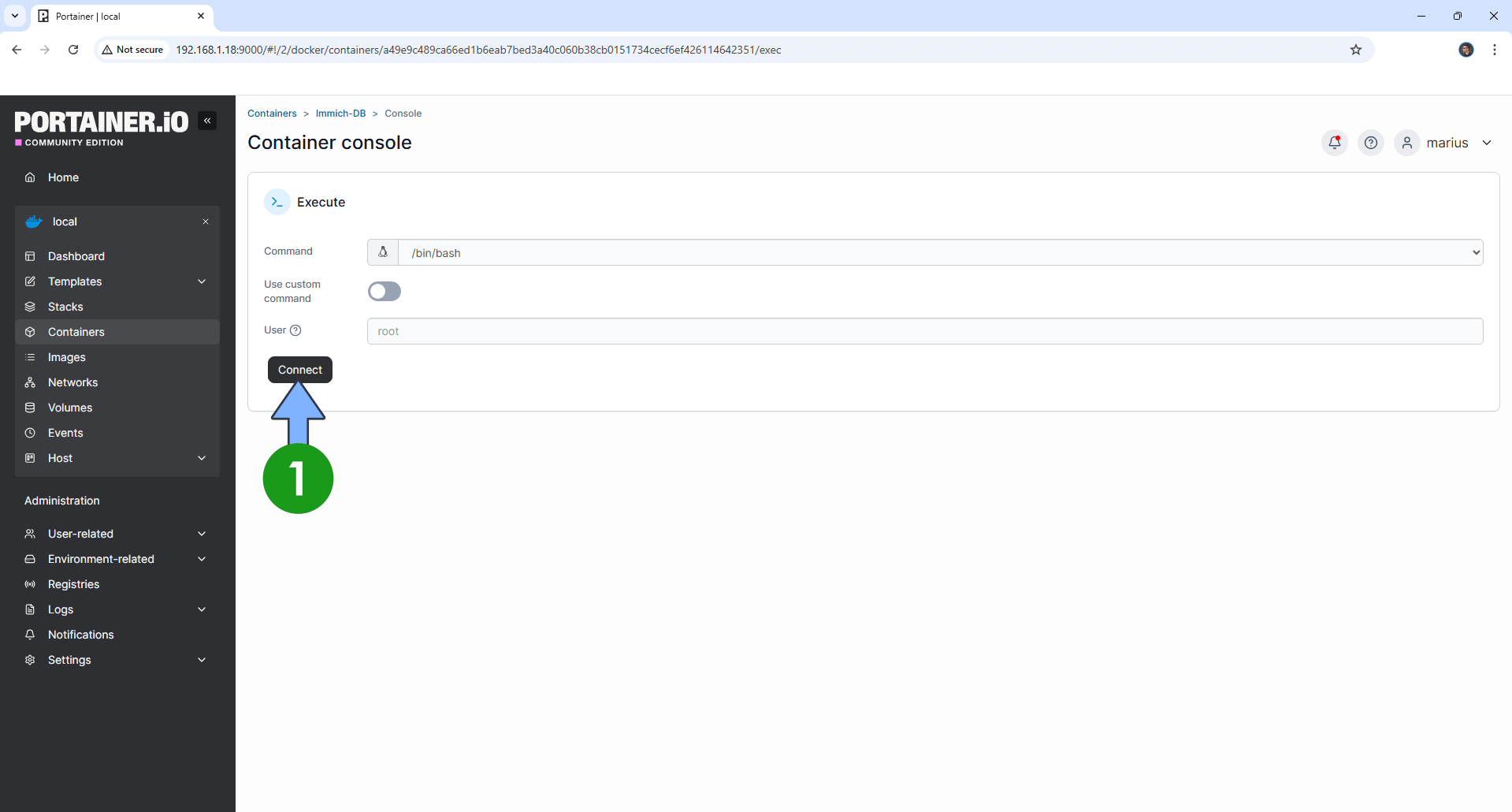
STEP 19
After you click Connect at STEP 18, a Console will open. Copy Paste the code below and follow the instructions in the image.
cd /overleaf/services/web && node modules/server-ce-scripts/scripts/create-user --admin --email=email@
Note: Before you paste the code above in the Console area below, change email@ text with your email.
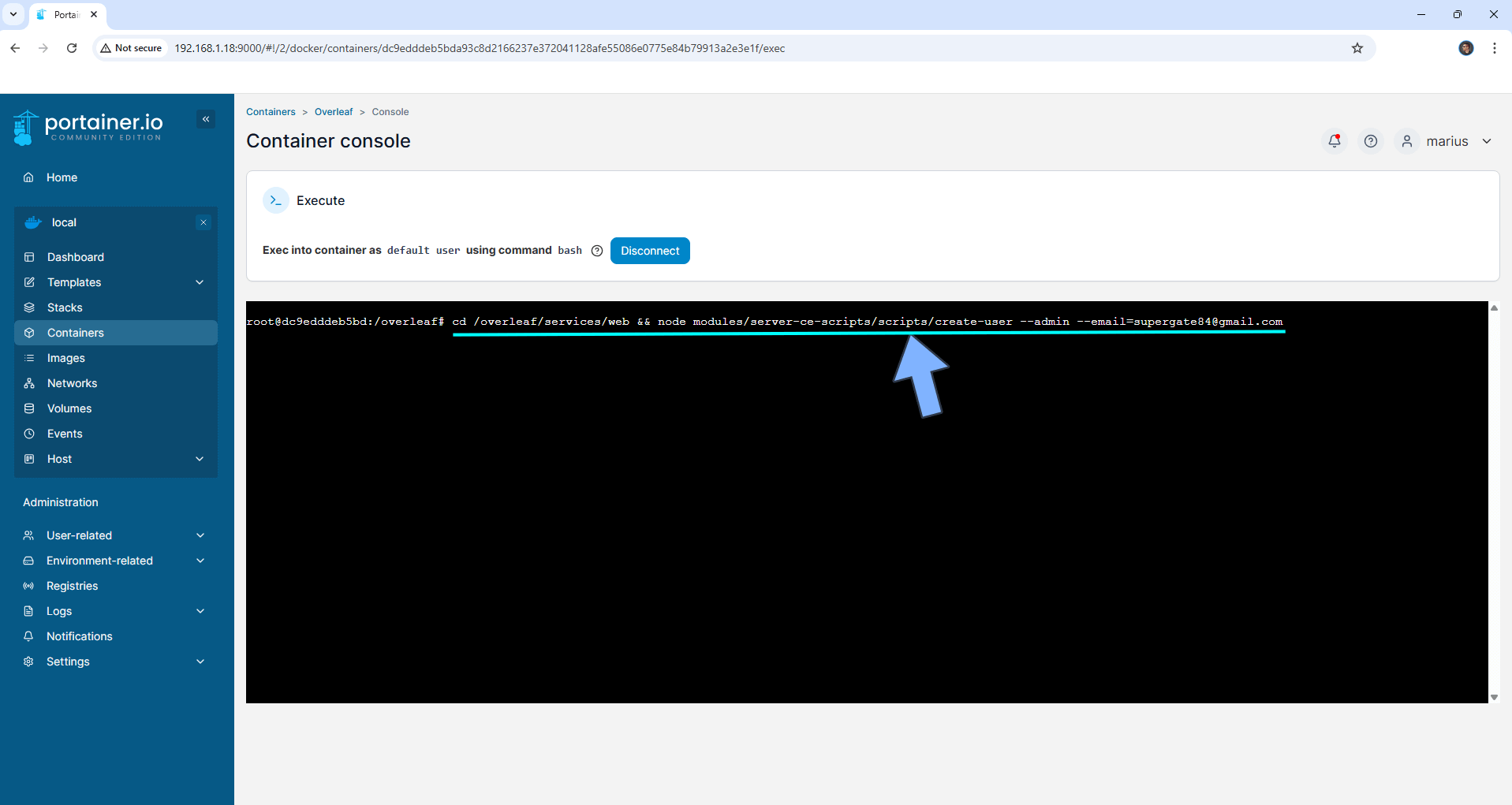
STEP 20
Once the code is inserted, confirm by pressing Enter on your keyboard to start the process of admin user creation. After some seconds, you will get a link. Copy your generated link.

STEP 21
🟢Please Support My work by Making a Donation. Almost 99,9% of the people that install something using my guides forget to support my work, or just ignore STEP 1. I’ve been very honest about this aspect of my work since the beginning: I don’t run any ADS, I don’t require subscriptions, paid or otherwise, I don’t collect IPs, emails, and I don’t have any referral links from Amazon or other merchants. I also don’t have any POP-UPs or COOKIES. I have repeatedly been told over the years how much I have contributed to the community. It’s something I love doing and have been honest about my passion since the beginning. But I also Need The Community to Support me Back to be able to continue doing this work.
STEP 22
Copy the link generated at STEP 20 and then paste it in a new browser tab. Type in your own Password then click Activate. Follow the instructions in the image below.
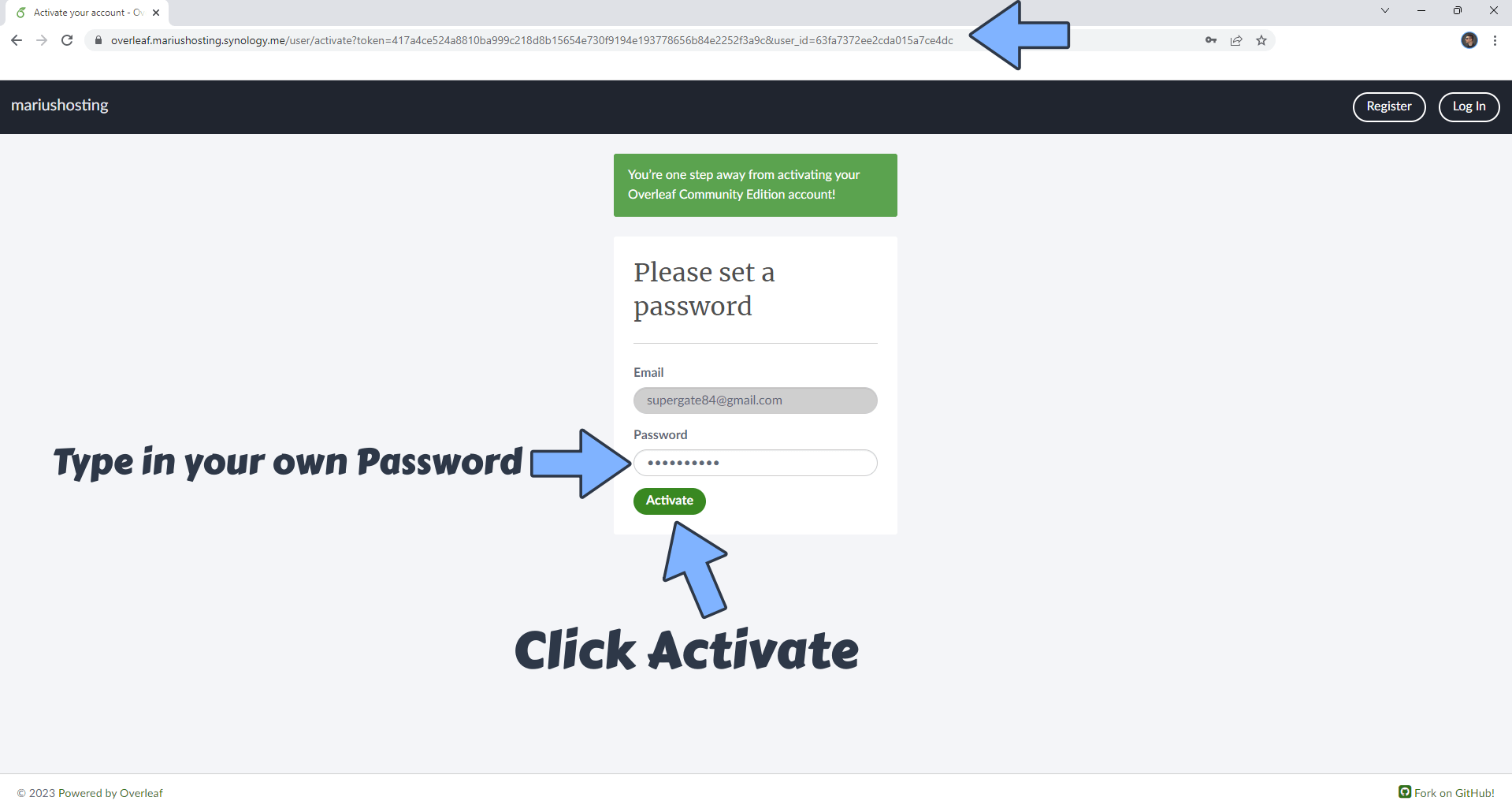
STEP 23
Click Create First Project then Blank Project. Follow the instructions in the image below.

STEP 24
Give a name to the Project then click Create. Follow the instructions in the image below.
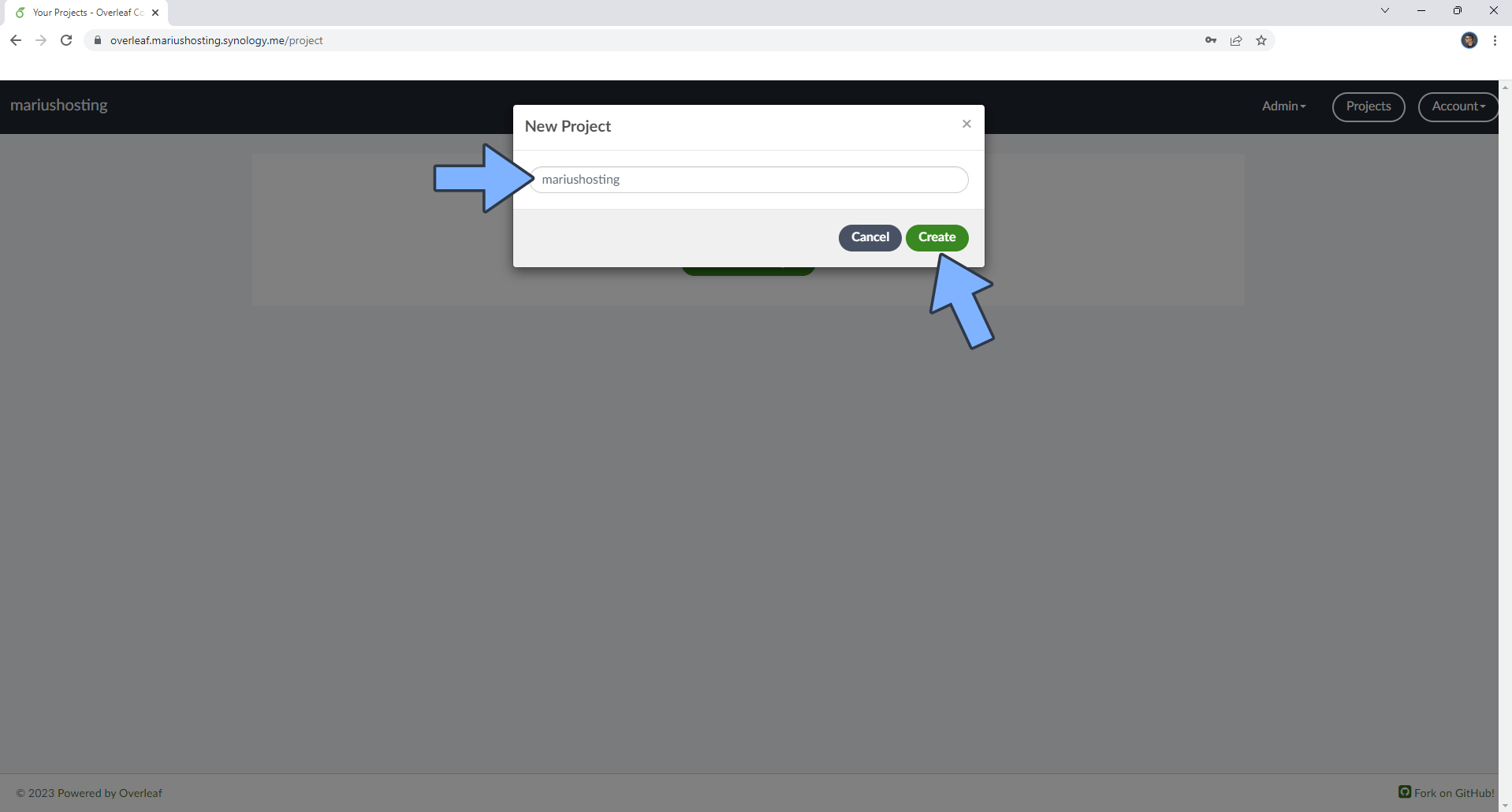
STEP 25
Your Overleaf dashboard at a glance! Click the home icon. Follow the instructions in the image below.
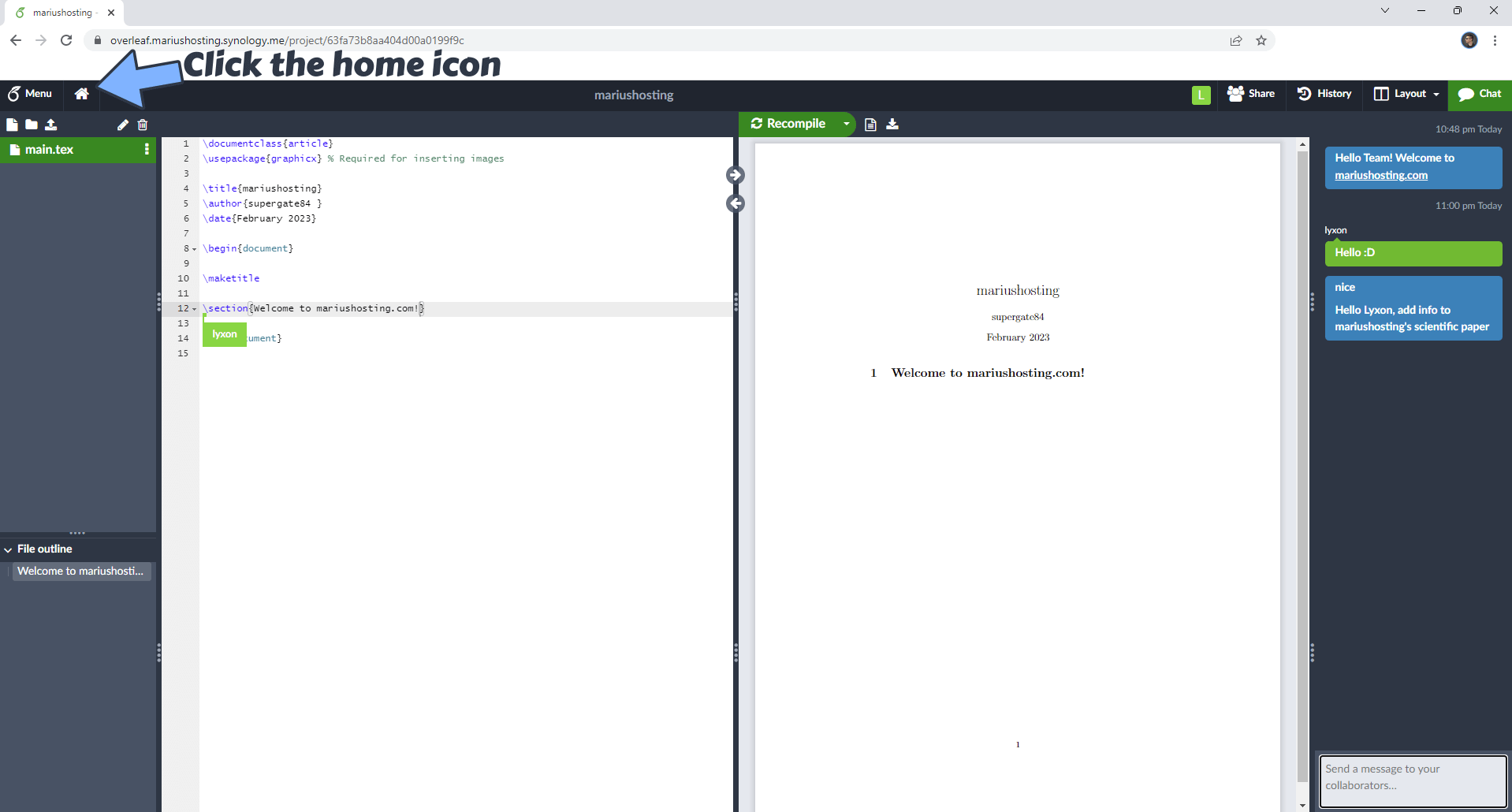
STEP 26
Confirm your email. Click Resend confirmation email. Follow the instructions in the image below.
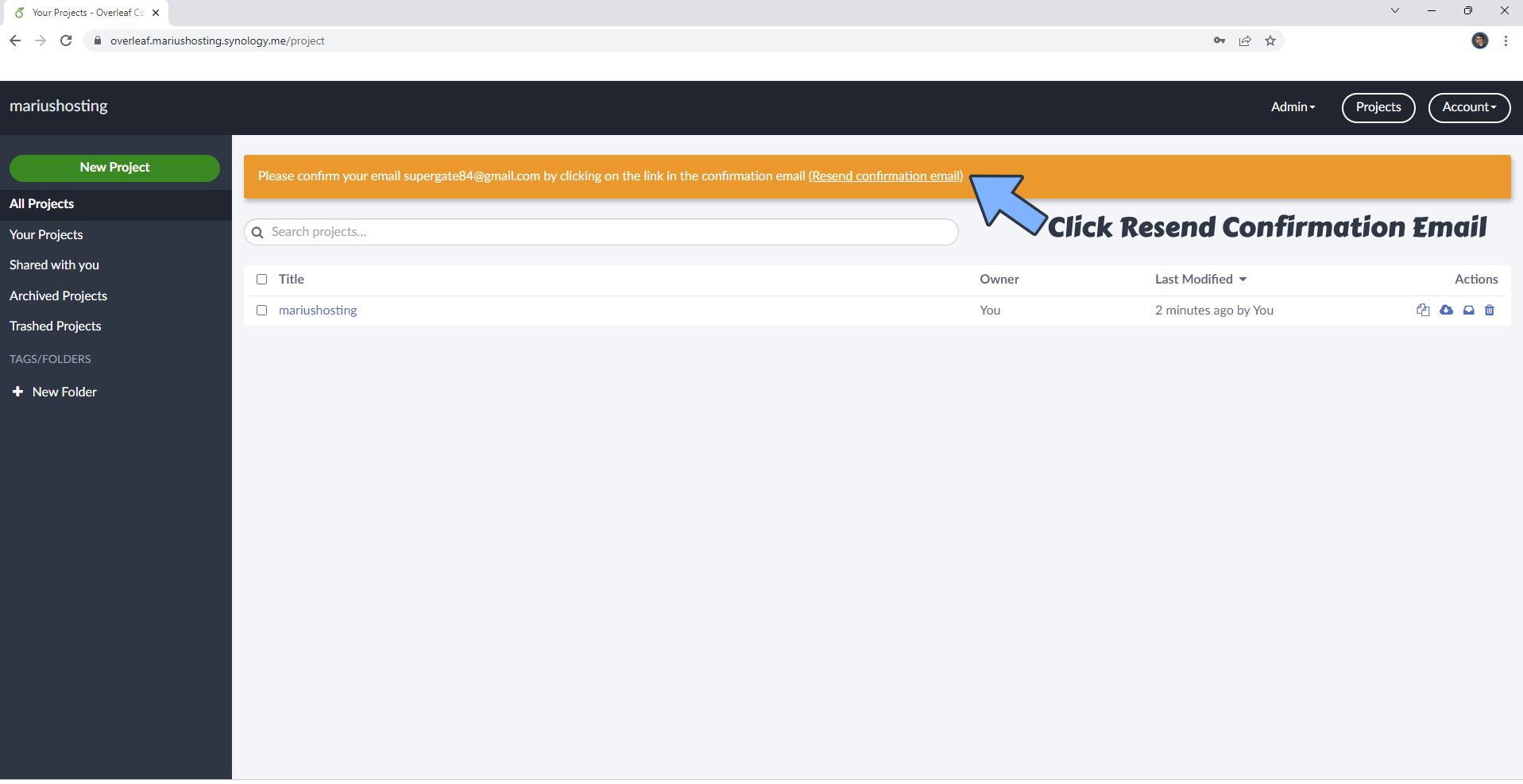
STEP 27
Check your email then click Confirm Email. Follow the instructions in the image below.
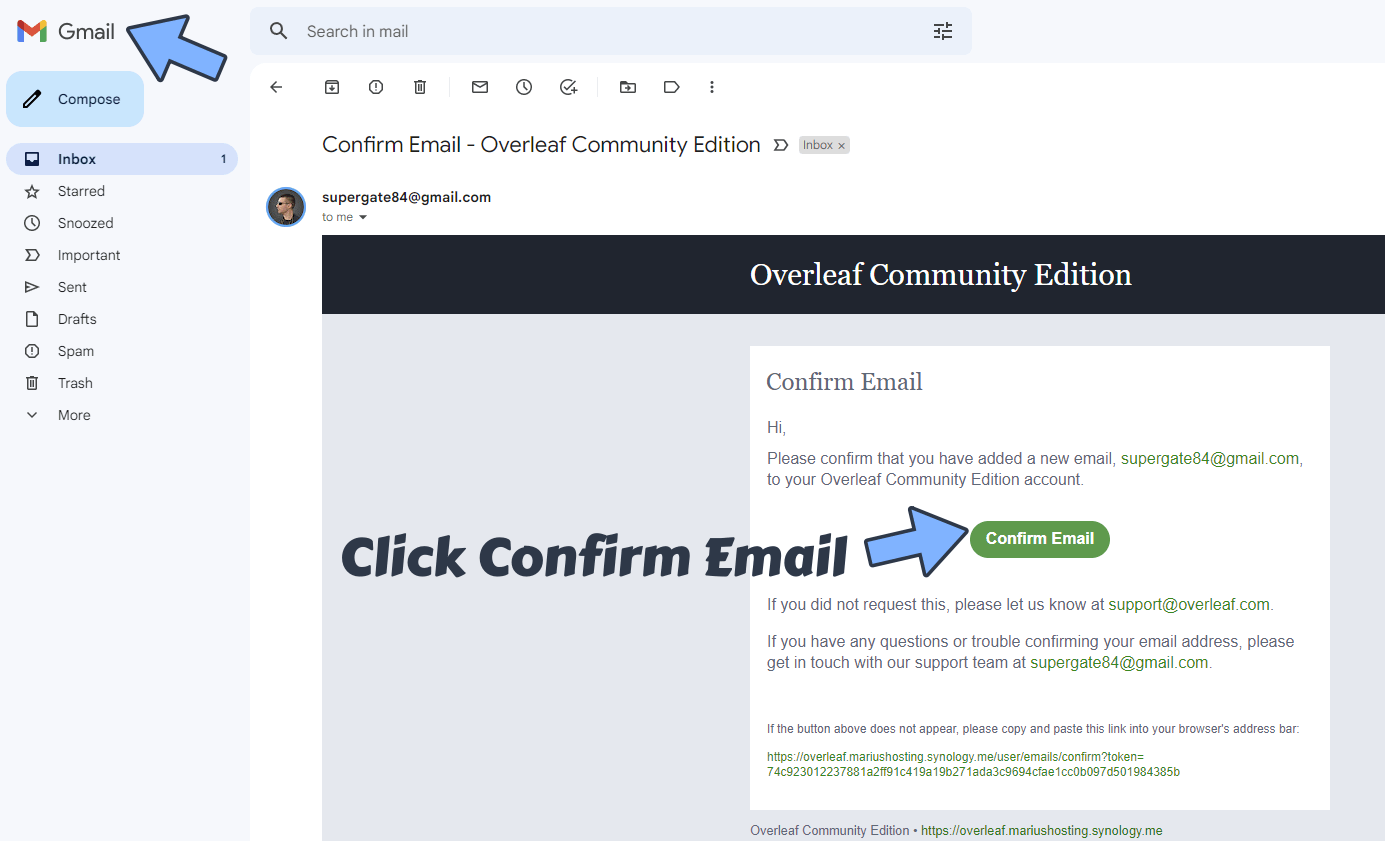
Enjoy Overleaf!
Note: Overleaf Full Environment Variables.
Note: Overleaf Full Documentation to use it.
Note: Can I run Docker on my Synology NAS? See the supported models.
Note: How to Back Up Docker Containers on your Synology NAS.
Note: Find out how to update the Overleaf container with the latest image.
Note: How to Free Disk Space on Your NAS if You Run Docker.
Note: How to Schedule Start & Stop For Docker Containers.
Note: How to Activate Email Notifications.
Note: How to Add Access Control Profile on Your NAS.
Note: How to Change Docker Containers Restart Policy.
Note: How to Use Docker Containers With VPN.
Note: Convert Docker Run Into Docker Compose.
Note: How to Clean Docker.
Note: How to Clean Docker Automatically.
Note: Best Practices When Using Docker and DDNS.
Note: Some Docker Containers Need WebSocket.
Note: Find out the Best NAS Models For Docker.
Note: Activate Gmail SMTP For Docker Containers.
This post was updated on Saturday / August 23rd, 2025 at 7:12 PM
